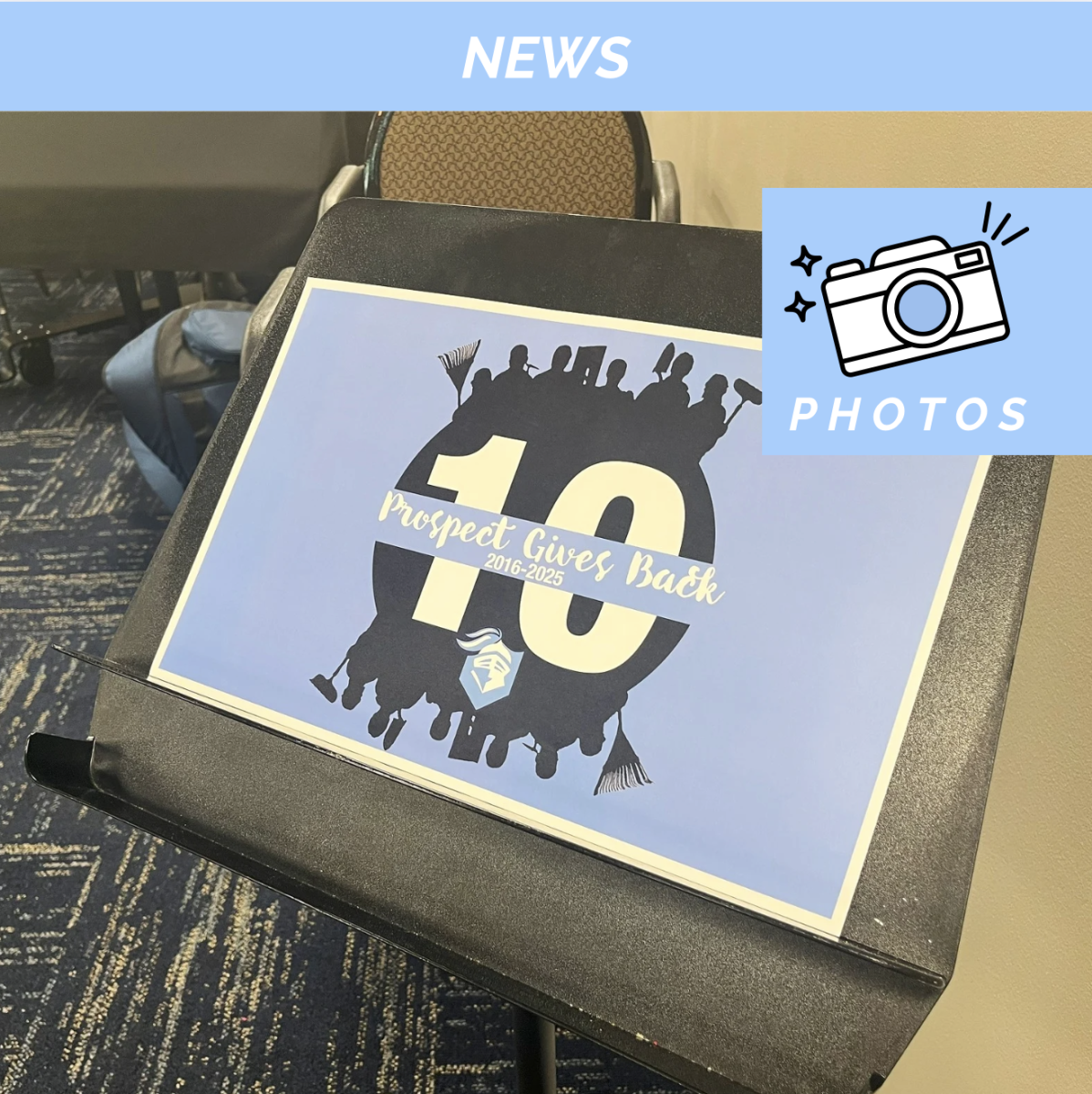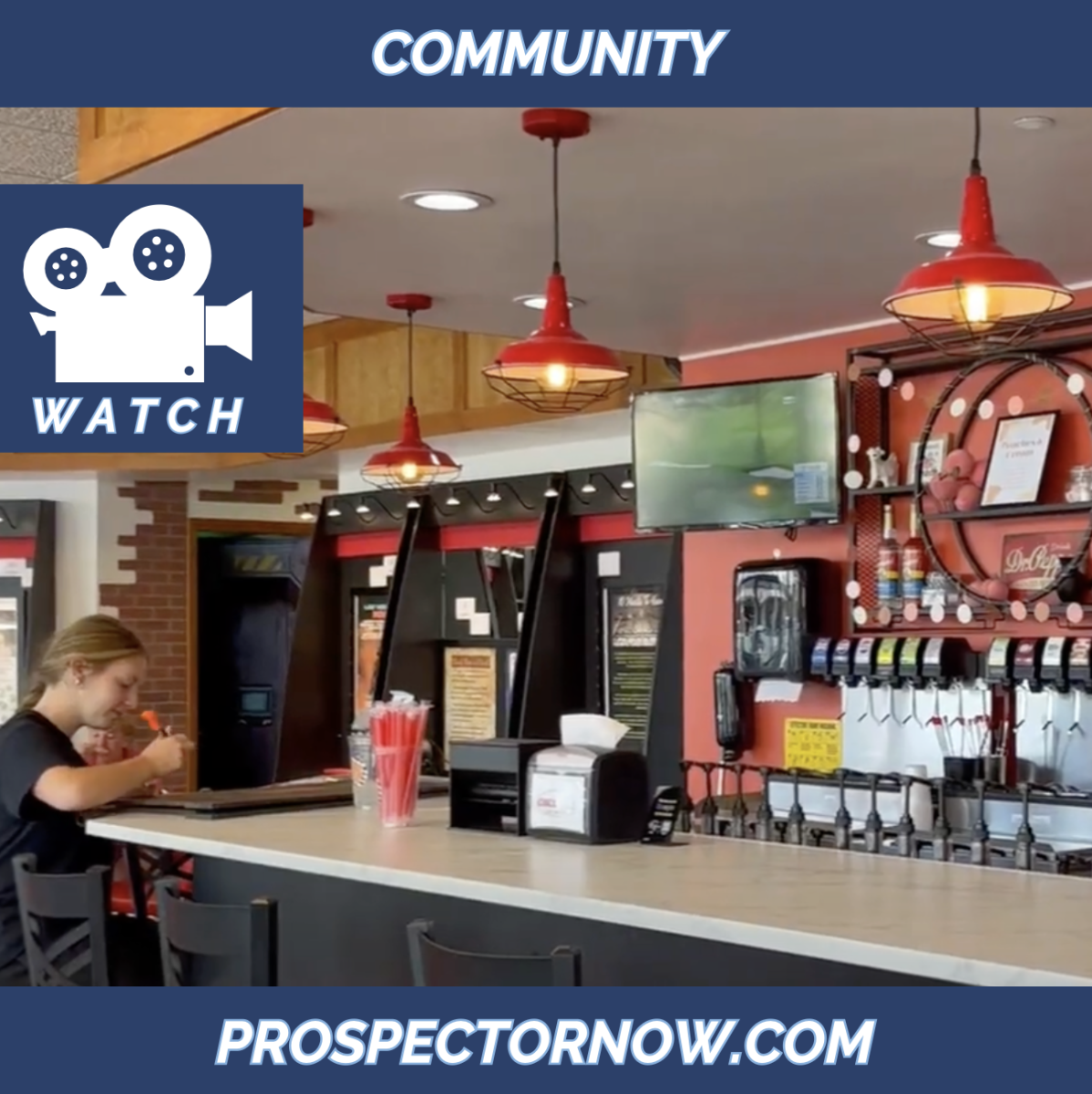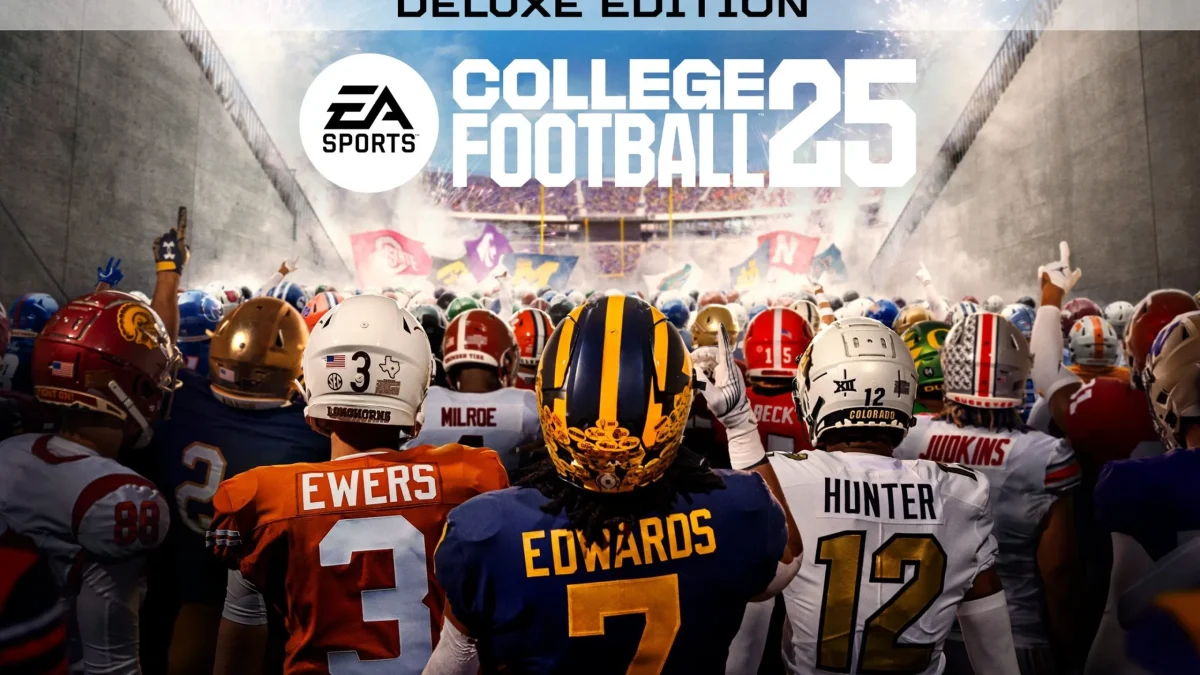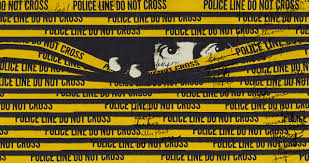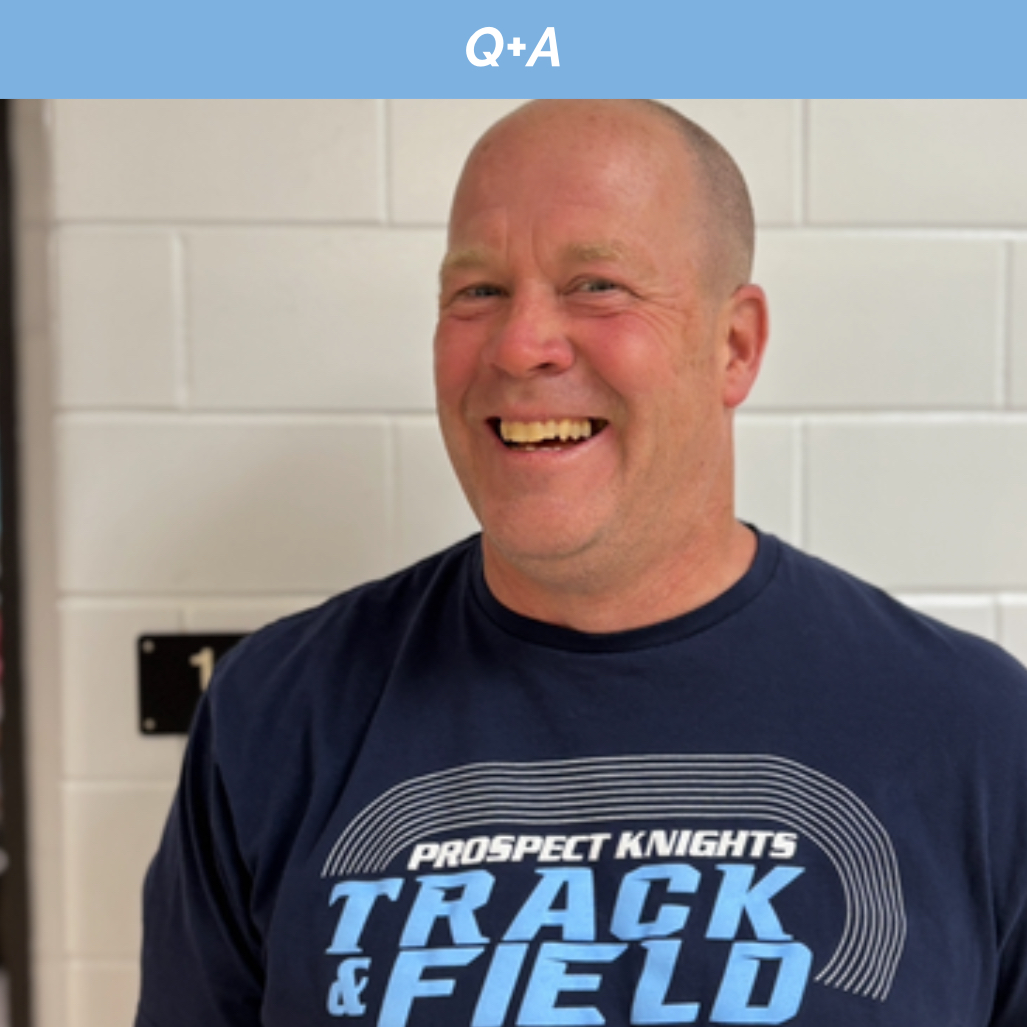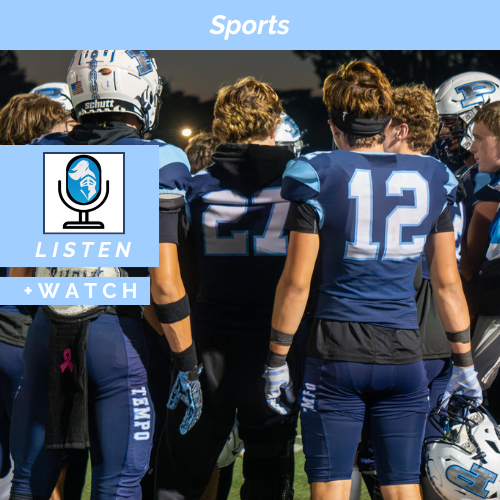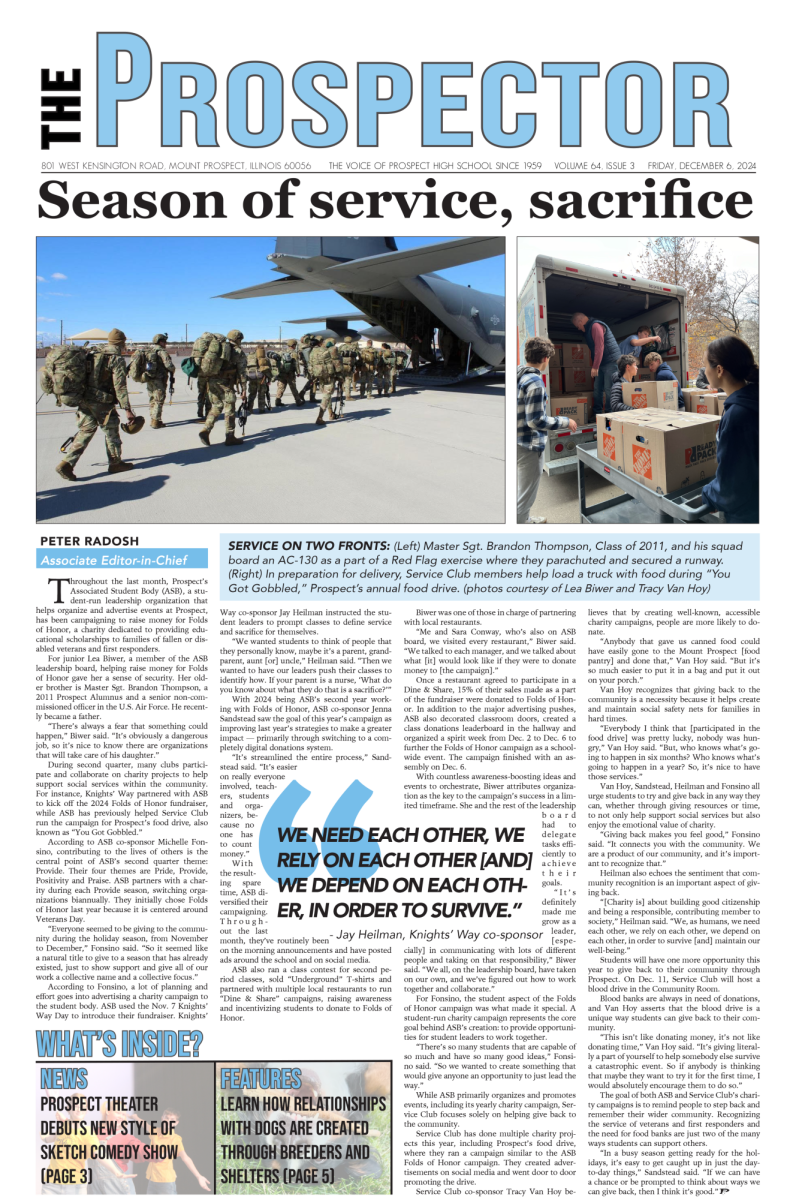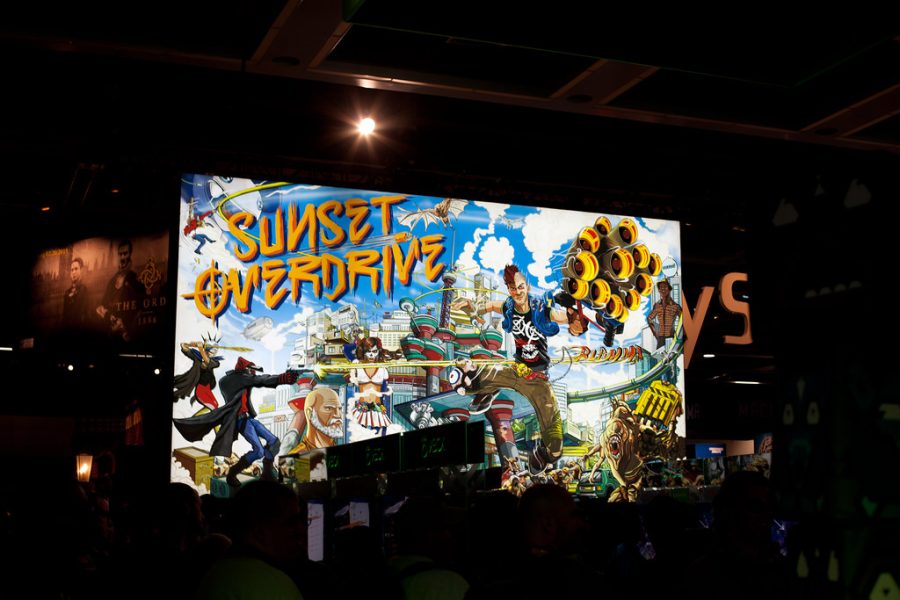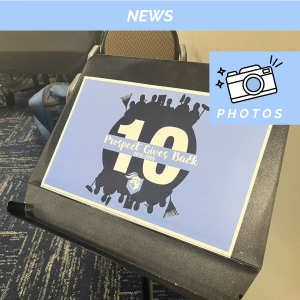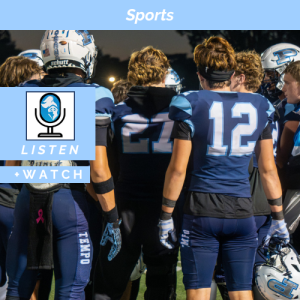Sunset Overdrive: Peak Open-World
December 19, 2022
When the Xbox One released back in 2013, many were cautiously optimistic about what new experiences it would bring to the table. Microsoft rather infamously stumbled at the end of the Xbox 360 generation by not releasing any heavy hitting exclusives, and heavily pushing the Xbox Kinect, a device trying to capitalize off of the success that Nintendo’s Wii had. Both of these factors led to Microsoft losing in total console sales to Sony’s PlayStation 3, but with a new generation of hardware came a new chance for Microsoft to strike back with the Xbox One.
Unfortunately, the Xbox One ended up being another failure for Microsoft. While Kinect games weren’t pushed nearly as hard this generation, the extreme lack of exclusives is what ended up killing them. The Gears of War games that came out were essentially Xbox 360 games with improved graphics, Microsoft’s flagship franchise Halo continued to disappoint with Halo 4, Halo 5, and arguably Halo Infinite, and Microsoft continued to do nothing with the countless amount of talented studios they had acquired over the years like Rare, who were forced to make Kinect games when they were capable of so much more.
After a year of the game drought on the Xbox One, Insomniac Games stepped up to the plate and released Sunset Overdrive, a game praised by fans and critics alike, and most importantly, a reason to buy an Xbox One, as the game was (and still is) only available on that console.
The game starts with a bit of backstory to the world. You (the player) work as a garbage collector at promotional events for Fizzco, a soda brand that has branched out to other forms of food and entertainment and controls half of everything that happens in Sunset City, the city that you live in. One day during a promotional party celebrating a new Fizzco drink called Overcharge, the new soda starts turning everyone into some kind of zombie-monster creature called OD (short for “Overcharge Drinkers”). You escape to your apartment and spend the night, until OD find you and break down your apartment’s door! Not to worry, though, as a man named Walter guns them down and rescues you, setting up the adventure.
After that introduction, the story takes a backseat until you get to the next story-based mission. You meet the rest of the survivors that work with Walter, including Two-Hat Jack, the weapons salesman, Calista, who sells clothes and melee weapons, and Floyd, who sells amps (upgrades for your character), and lets you create Overdrives by participating in battles defending the base from OD, but I’ll get into that later.
In terms of controls, Sunset Overdrive is easily one of the best games I’ve ever had the pleasure of playing. You can grind, bounce off of objects on the ground, wall run, swing off poles, and about half way through the game you receive the Air Dash, a game changer in every sense of the word. This brilliant move set, along with how light your character feels to control, allows you to traverse the world of Sunset City effortlessly, blending perfectly with the simplistic shooting the game has to offer.
Sunset City is the perfect open-world. A huge (pun intended) problem with a majority of games following the open-world trend that has spiked in popularity recently is how empty and hollow the world can feel. It brings me great joy to say that Sunset Overdrive nails it’s open-world, and even though the city is massive, there isn’t a single part of it that feels like it wasn’t made to be a playground for you to jump and grind around, killing OD as you go. While not every area is as detailed as something like Hyrule in The Legend of Zelda Breath of the Wild, you also move a lot slower in that game, and the much slower movement makes every little area a lot more noticeable. In Sunset Overdrive, not every single building needs to be super detailed because you are just going to fly over it anyway, and if you choose to slowly explore, there will be a collectible, OD to fight, or something to bounce on to help push you forward.
The boss fights in this game are fantastic and all take full advantage of the game’s controls, mechanics, and the fact that it’s an open world. Whether you’re fighting a giant inflatable of Fizzy, Fizzco’s marketable mascot, fighting a roller coaster cart while grinding on the track behind it, or hunting down the Fizzco headquarters as it fires lasers and causes destruction to all of Sunset City in the final fight, every boss feels fully thought out and never halts the pace of the game.
As I mentioned before, the shooting in Sunset Overdrive is very simple. Move the right stick relatively close to an enemy or destructible object and let the auto-aim do the rest. While this system sounds bad on paper, It goes together with the movement wonderfully in practice. Having to meticulously aim at enemies below you while flying through the air at insane speeds would be annoying and pace-breaking. The auto aim system wouldn’t work in other third person games with an emphasis on shooting like Gears of War or Uncharted due to the movement in those games focusing on getting you to where you want to go so you can then shoot. Sunset Overdrive is a movement and parkour-based game, so It’s about shooting to get yourself where you want to go. Much like the open-world itself, the shooting is much more complicated than it seems. Insomniac cracked the code, though, as the shooting in Sunset Overdrive is simple, but leaves the complexity up to the player in their weapon choice.
On the topic of combat, It’s about time I talk about the elephant in the room. The “Overdrive” in Sunset Overdrive. Throughout the course of the game you and the team Walter has put together stay at a multitude of different bases to produce Overdrives, similar to amps in the way that they upgrade your character, but much more powerful. The Overdrives themselves are great and a fun way to mix up the combat from time to time, but how you get them is, gameplay-wise, the weakest part of the game.
To get Overdrives, you must head to your base and talk to Ford to compete in a battle against OD to defend against the base. Before this, though, you must set up traps around the area to help you either stun or kill the monsters. You can only lay a certain amount of traps, so you need to manage where you want to put them, how far away you want them from each other, etc. After you keep both the base and yourself alive for a few minutes, the challenge ends and you get your upgrades. These sections aren’t bad at all and you’re only required to do them a few times, but when most of the game is about grinding and jumping to explore a massive city, shooting enemies as you go, being stuck in a small arena for multiple minutes without any way to speed the process up is the only part of the game that feels pace-breaking. Saying the defense battles are the worst part of the game and them not even being terrible really goes to show how well designed the rest of the experience is, though.
Based on what I’ve told you so far, you might be thinking that Sunset Overdrive is a dark, gritty third-person shooter/parkour experience hybrid that tells a tale of caution about consumerism and the dangers that come with it. In reality, though, the game almost entirely stops taking itself seriously after the first cutscene, which is really disappointing because the setup is there for something really great. A few missions into the game, Walter shows you a helicopter that he plans to use to fly over the high walls surrounding Sunset City and inform the world that there are still survivors awaiting rescue. The player accidentally breaks the propeller off of the helicopter soon after, and feels obligated to find a new one. This causes you to save a former college student named Sam and spend too much time gathering items for his spoiled friends so they are willing to help you. During which, you discover how “unique” the main character is.
In an attempt at humor, Insomniac decided to make the main character spout off so many fourth wall breaks that I legitimately forgot that the other characters in the game didn’t know that they were in a video game. Humor is completely subjective and I don’t want to rain on anybody’s parade because I know many people found the comedy in this game funny, but besides a couple well thought out gags, the humor in this game just replaces what could have been an endearing story for me. Let’s look at a game that I believe does fourth wall breaks better, that being Conker’s Bad Fur Day from 2001. Now this game is very, VERY different from Sunset Overdrive, but I bring it up as a point of comparison because its story is also comedy based, but uses fourth wall breaks very sparingly, which is when they are the most effective. Having Conker be self aware about halfway through the game and make a comment about how he’s “determined to get something out of this” is not only more subtle, but also funnier because this is only one of a few moments in the game where Conker says something like that.
Overall, the story is a mixed bag. The concept is great, but the overuse of fourth wall breaks and at-best mediocre jokes kill what could have been something really great. I don’t think the story is terrible or anything, I’m just disappointed they didn’t do more with the idea. It’s not really fair to criticize what they didn’t do though, and there are some moments throughout the game that catch me off guard and get a good chuckle out of me from time to time.
In conclusion, Sunset Overdrive is a must play. Even if I think its story could be much better and I have a few nitpicks here and there, the gameplay and world make this one of the most enjoyable and memorable games I’ve played to date. To both of the people who bought an Xbox One, do yourself a favor and pick up this gem, you definitely will not regret it.

